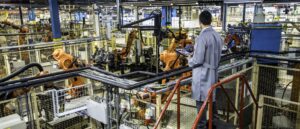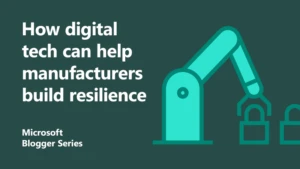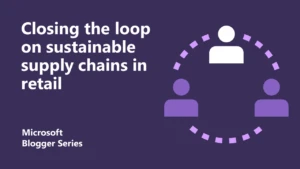
Artificial Intelligence from Algorithms to Opera
Key takeaways from the A.I. Summit in London
Last week’s A.I. Summit in London opened in the most peculiar and spectacular way: with opera. More specifically with “Libiamo ne’ Lieti Calici” from Verdi’s La Traviata. Though I can’t say for certain, I can imagine that the questions in the minds of attendees ranged from “Wow! Is that a robot singing Verdi?” to “Why an opera singer at a summit about artificial intelligence?” To the former, the answer is no – it was performed by the very human soprano Zita Tatrai (@zitatatrai). To the latter, “Why opera?” if you think about it, it makes perfect sense.
In both opera and artificial intelligence, there is a wonderful confluence of various disciplines coming together to make something unique that adds to the greater book of human knowledge. Also, and perhaps this is a bit more obscure of a connection, as she sang, it reminded me of one of my favourite episodes of Star Trek Voyager in which A.I. and opera become intertwined in an almost existential way. If you’re not familiar with the episode here’s a quick summary.
The starship Voyager is equipped with an emergency holographic doctor – a sentient, learning A.I. program whose primary purpose is to help diagnose and treat ailments of the crew. While on an away mission (he branched out beyond his initial programming) his ability to sing makes him a celebrity among an alien species that had never heard of singing. In an attempt to meet their increasing demands for more complex patterns of vocal data, he comes very close to giving up his acquired humanity.
Many of the issues about artificial intelligence raised in Voyager are the same ones that the A.I. Summit speakers discussed during their sessions. While there were many more themes brought out by various speakers, I’d like to spend some time looking at some of the common areas of discussion raised by the group.
Why A.I. and why right now?
Most of the day’s speakers had some variation of the question, “why A.I. and why now?” And most pointed to a similar set of variables as Paul Chong (@pchong68), Director of IBM Watson Group for EMEA. As Paul noted: there’s a proliferation of things (devices) creating a deluge of data that continues to grow exponentially. As Dr Harrick Vin (Global Head of Digitate & ignio™ @HarrickVin) put it, we are all hyper-connected and instrumented. We also now have the raw computational power (quantum computing) to process this deluge of data, and are developing increasingly complex algorithms to turn this data into a connected intelligence that allows machines to learn and act on our behalf.
So will that intelligence rise up and put us in human zoos?
Many of the speakers also seized on the sensationalised science fiction image of a future society ruled by sentient machines that will enslave humanity, and juxtaposed it with a more realistic (or at the very least more hopeful) vision of the trajectory of machine learning where machines will understand who we are as individuals to answer our complex questions, can translate our unstructured requests into sophisticated workflows and outputs, and will anticipate and respond to our needs before we ask. Or, as a few of the speakers put it: less Skynet from Terminator more Jarvis from Iron Man.
That’s not to say that the rise of machine learning doesn’t bring with it some very real consequences for the human workforce. As George Zarkadakis (@zarkadakis) from Willis Towers Watson noted, roughly 60% of current jobs can have 30% job activities automated by machine learning right now. And if that machine learning costs significantly less than human labour, and can be reliably scaled-up, then many of our current job roles will be at risk (nearly half according to some recent studies) within the next decade or two.
So what’s the current state of play for A.I.?
Publicis.Sapient’s Josh Sutton provided a great framework for where machine learning (above and beyond the virtual assistant) is right now, highlighting three areas where A.I. is having a tangible business impact.
The first is in the ability to generate insights from large data sets. In advertising, for instance, that may be in helping to identify when individuals are planning on making large purchases and providing highly personalised bespoke offers to each based on a number of factors. The second is the ability to accelerate manual knowledge-based processes. In finance, that may be a bank using machine learning to automatically analyse the financial performance of the firms in which it invests so its analysts can focus on more sophisticated evaluation and analysis. The third area where A.I. is having a major impact is in the ability to create value from unstructured data. In customer service, for instance, that may be using bots to dynamically read through call-logs to provide real-time suggestions to call centre reps. Or, as RBS’s Head of Digital, Chris Popple (@chrispopple), described – bots (like their A.I. pilot, Luvo) that can interact directly with customers for mobile banking tasks.
Keeping the humanity in the future of A.I.
While there was a lot of discussion on the implications of A.I. for business, Microsoft UKs Chief Envisioning Officer, Dave Coplin (@dcoplin), focused a bit more on the human implications of the way A.I. impacts business. He gave the example of the use of A.I. for real-time language translation in Skype. While it clearly will have an impact on the way business communicates, at its core, it’s an example of AI that connects people to other people. As A.I. evolves, there’s a unique opportunity and challenge of making those normal conversations the next big interface with computers. As Dave put it: human language (not just in speech, but in gestures and facial expression) is the new UI, and conversation as a platform the new frontier for machine learning.
Certainly, though, not the final frontier. But to bring it back full circle, as we continue to navigate our complex relationship with A.I., it’s important to keep sight of the things that matter most to us as humans as we continue to create works of art (A.I. or otherwise) that move society, not just technology forward.





